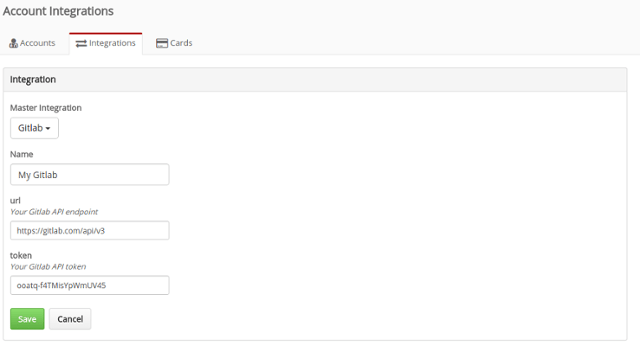This tutorial is a re-post of Shippable's blog post.
GitLab is a fast-growing choice for enterprises managing their application code and team collaboration both on-premises and in the cloud. Today we are excited to announce Shippable support for application delivery pipelines for GitLab developers.
Shippable now extends GitLab's combination of Git-based source code repositories and enterprise features such as authentication and security with CI/CD pipelines. Shippable connects with GitLab self-managed community and enterprise editions as well as their cloud offering so we work the way you want to.
"We're excited that Shippable now integrates with GitLab. With Shippable anyone using GitLab can now easily deploy their code, independent of their stack and cloud environment." says Job van der Voort VP of Product at GitLab. "Like GitLab, Shippable works with established technologies, as well as with containers, making this an excellent solution for organizations of any size to bring their code from their repositories in GitLab to production."
Our new Shippable integration for GitLab supports running builds for your push commits, merge requests and even show the build status in GitLab, so you can enjoy the power of Shippable within GitLab. To know more about how to set up Shippable CI with GitLab, read on.
Setting up GitLab account integration
To start off, sign into Shippable. (GitLab.com identity support coming soon.) Once signed into Shippable:
- Click on the gear icon for 'Account Settings' in the top right navigation bar
- Click on the 'Integrations' tab
- Click on 'Add Integration'

- Select the drop down under the 'Master Integration' & select 'GitLab'
- For the 'Integration Name', use a distinctive name that's easy to recall
- For 'url', enter the API end-point of your GitLab instance, this is usually of the format https://your-gitlab.com/api/v3. If you're using GitLab.com, this will be https://gitlab.com/api/v3.
- For 'token', navigate to your GitLab Profile Settings in your GitLab instance and copy the Private Token provided under Account.

- Click save.
Next, let's sync the Account to ensure the permissions are up to date. To do this, go to the 'Accounts' tab & click 'Sync'.

Once synced, your GitLab subscription should be available from the 'Subscriptions' drop down in the dashboard page. You can now proceed to enable any repository (project) and configure your Continuous Integration.
Build triggers
Shippable automatically triggers build runs for all GitLab code commits or merge requests, indepenedent of the user who initiated it. Once the build triggers, you can view the build status and build details. In addition, Shippable integrates with GitLab build status API and displays the build status directly in GitLab as shown below.

Get a build going
To get a build going for a project, add the Shippable config to it and then proceed to enable the project from your subscription in Shippable. Any build failures are notified instantly via email, and in Gitlab's build status. Slack, and Hipchat, IRC notifications can also be configured.
You can even proceed to configure Continuous Delivery using Shippable Pipelines and Docker. With Continuous Integration ensuring that the features are working fine, and Continuous Delivery automatically deploying the successful builds, you can ensure a smooth, fast, bug-less transition from development to production.
At GitLab, we are always excited to integrate with products that our customers use. Thanks to the Shippable team for writing this blog post and for working with us.




